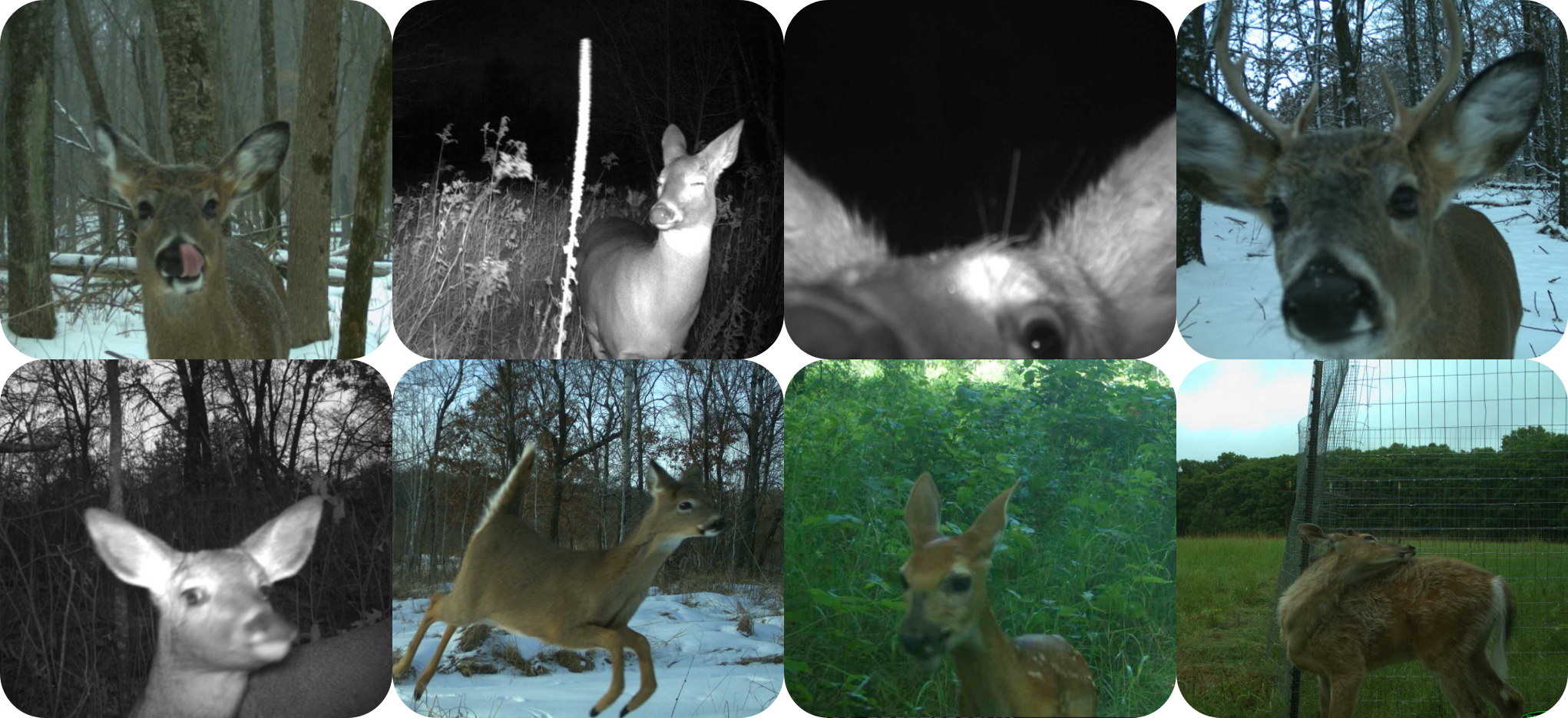Cedar Creek's latest project calls on citizen scientists to identify on-site wildlife entirely online.

Pictured above: Oh Deer! Visitors to Eyes on the Wild will find lots of photos of deer. Here are a few of favorite snapshots.
Racoons, coyotes, turkeys, bears, lots and lots of deer.
These are just a fraction of the species that can be found at Cedar Creek Ecosystem Science Reserve, located north of the Twin Cities. But you don’t need to visit the field station, world-famous for its long-term ecological research, to get a look at the wildlife. In fact, you don’t even need to leave your couch. Thanks to Cedar Creek’s new citizen science project, Eyes on the Wild, all it takes to come face-to-face with wildlife is an Internet connection.
It all started in 2015 when a litter of wolf pups turned up at Cedar Creek. It was the first time in a century that a den with a litter of wolf pups has been found so far south. Naturally, questions emerged about the wolves’ impact on the environment. So in 2017, an extensive network of heat-activated camera traps laid out in a grid over the entirety of the reserve’s nine-square mile was installed to capture images of wildlife.
With over 100 cameras and an abundance of wildlife 一 58 of the state’s 77 recorded mammal species can be found at Cedar Creek! 一 it didn’t take long before over a million photos were generated; far too many for Cedar Creek’s small group of researchers to handle. That’s where you come in. Simply pull up eyesonwild.com, classify which animal you think you see, answer a few quick behavioral questions, and you’re a bona fide researcher!
If it sounds almost too easy, that’s by design. In the words of Cedar Creek Education and Outreach Coordinator Caitlin Potter, “There’s no need for an advanced degree. You just go on and identify what you think is in the picture.”
Relying on the wisdom of the crowd isn’t quite the gamble it might seem. Each photo is vetted by a minimum of ten people and, according to Potter, volunteers and experts agree over 90 percent of the time一even on trickier species.
That being said, most of the photos generated are of a species most Minnesotans are familiar with: deer. Even so, Potter says each image provide glimpses into the aspects of animals’ lives you don’t normally get to see ranging from eagles battling it out for a meal, animals taking naps, and mothers and their young. “It’s a really fun project, even with all the deer.” -Gina Van Thomme